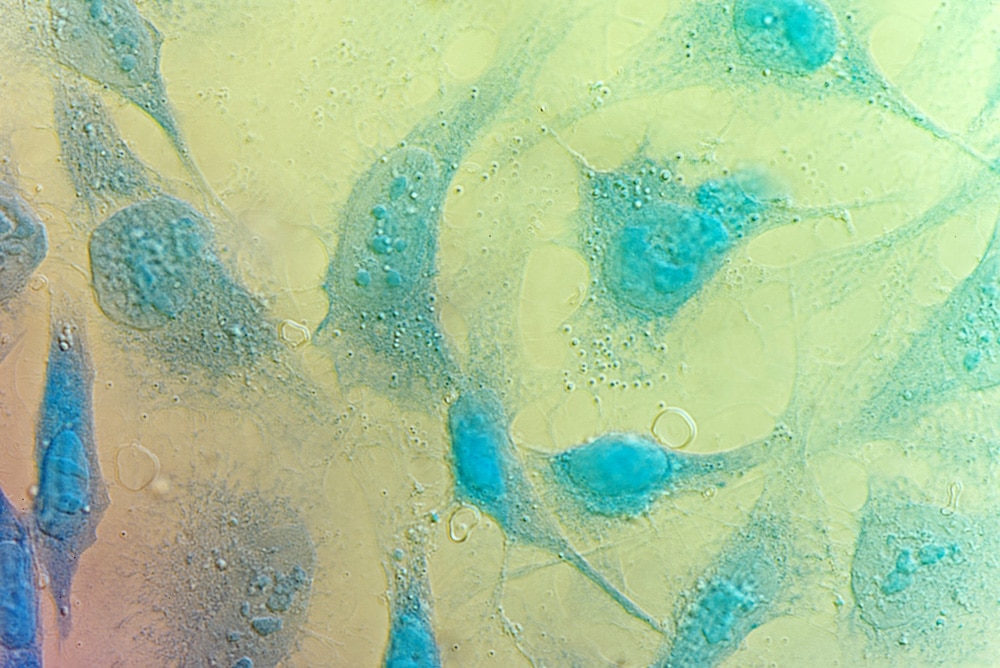How to Transform Your Images from Mediocre to Publication Quality with Köhler Illumination

You’ve spent days, perhaps weeks or months squirrelling away tubes of preserved tissue in the dark drawers under your laboratory bench like the trophies of a demented serial-killer.
Hours have been spent in histology in the processing, embedding and sectioning onto slides.
Finally, like a warrior victorious in battle, you hold aloft your thin glass trophy, glinting in the fluorescent lab lights as you stand there in your haematoxylin stained lab coat laughing manically above the roar of the down-flow benches and fume hoods.
Now that you have your little multi-coloured sliver of flesh, you’ll need to take some images. If you only need images for your lab book, then it’s just a case of putting the slide on the stage, switching on the camera and PC and away you go.
But if you need impressive images – for poster presentations, Powerpoint slides, journal articles or just to impress your peers, then spending a little time on each one will transform the image from mediocre (and requiring your audience to perhaps use a little imagination!) to an evenly illuminated, sharply contrasted image which should extract happy noises of awe and appreciation from the viewers. This is where a little knowledge goes a long way and once you learn the technique, it should become second nature before you press the shutter, or click on ‘capture’.
Köhler Illumination
Köhler Illumination is named after its inventor- August Köhler who published his technique in 1893. On the strength of his work, he was invited to join the Carl Zeiss Company where he worked for 45 years. Köhler Illumination optimises the resolution of the microscope.
It’s a method of ensuring that the light from the source within the microscope evenly illuminates the specimen on the slide, produces a sharper image and, in turn, increases the contrast between regions of staining and non-staining, or between areas of tissue.
Doubtless you will have seen a diagram of light passing through the various lenses and sections of a microscope before reaching the stage. Imagine that small pyramid of light on its’ final journey from the lens of the sub-stage condenser to illuminating the slide clamped on the stage. The apex of this pyramid should be as sharp as possible under your section and should also be as near the centre of the field of view as possible.
The way in which these two parameters are adjusted is by using the field diaphragm in conjunction with the sub stage condenser and the two centering screws. There are only really five steps to Köhler Illumination.
The only pain is that the settings change for each objective on the microscope due to factors such as different numerical aperture and focal length of each objective.
Let’s walk through these five easy steps:
(1) If the lenses, eyepieces, objectives look dirty/dusty, I would always suggest cleaning them. Cleaning lenses is another article in itself, but always use lens cleaning tissue and always use a solvent which has been recommended for use on optical lenses. Place your slide on the stage, make sure the light control is at the lowest setting (if it is a separate dial) and turn on the lamp.
(2) Depending on who has last used/abused the microscope (has there been a professor near it recently?!) will depend on what you see when you look down the eyepieces. Close down the Field Diaphragm- this will be on the base of the microscope and is positioned just above the light source. When you look down the eyepieces, you’ll now just see a small circle of your slide.
(3) Now focus the Condenser. The adjustment wheels for this will be just in front of the focus dials as you sit at the microscope. Move the Condenser slowly up and down whilst looking at the small circle of light in the eyepieces. You’ll see that the edge of the circle of light will go in and out of focus (and change from a red fringe to a blue fringe). Try to make the edge as sharp as you can.
(4) Once you have the sharp circle of light, have a look at the whole Condenser section of the microscope. You’ll see the two Centering Screws. You can do this stage with the Field Diaphragm closed down or almost fully open. I tend to do it with the Field Diaphragm where I left it in step 2 above. Hold on to each of the screws and look down the eyepieces again. As you turn the screws, you’ll see the circle of light move- you’re aiming to have the circle in the middle of your field of view. Once centred, open up the Field Diaphragm until the edges of the black circle just disappear from view. The other way to do this step is to open up the Field Diaphragm again, but not all the way- just before the edges disappear from your field of view. Then carry out the centering procedure. Entirely up to you!
(5) The final adjustment is to the Iris (or Condenser Aperture) Diaphragm. Just below the centering screws you’ll find another diaphragm similar (but smaller) than the main Field Diaphragm. Whilst looking at your slide, open this fully, and then start closing it until the image ‘flare’ disappears.
There. That’s it. Done!
Remember- close down the light, focus the edges, centre the spot, open up the light, reduce flare.
Once you all go to try this out on your own microscopes, I would love to know how many were anywhere near the correct set-up!